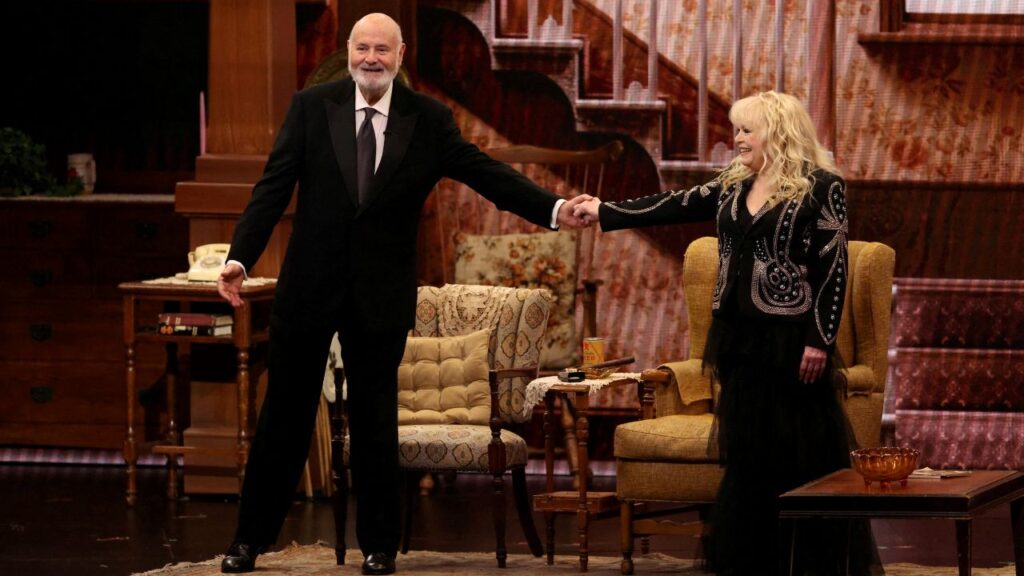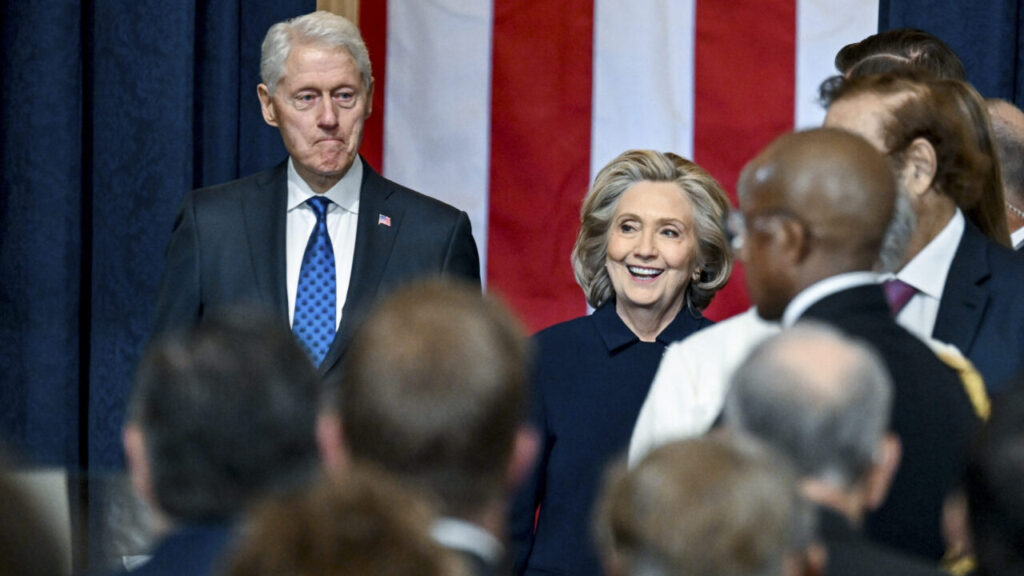Share
Jerry Brown closed a cosmic circle this month when he inducted actor Robert Redford into the California Hall of Fame.

Opinion
Dan Walters
CALmatters Commentary
The 1972 movie’s screenwriter, Jeremy Larner, and its director, Michael Ritchie, drew on their personal experiences in political campaigns to depict the title character’s quest to unseat a popular senator.
However, the fictional Bill McKay’s ambivalence about his back-slapping politician father – attracted to political office but repelled by the gritty work of winning it – reflected Brown’s clearly mixed feelings about his father, Pat Brown.
Jerry Brown’s meteoric rise from community college board member to secretary of state and then to the governorship in just six years would probably have been impossible if he hadn’t been carrying his father’s name.
As writer Richard Reeves put it in an early profile: “Nobody ever gave Jerry Brown a free hot lunch at school, but he practically inherited the governorship without political trial or conditioning.”
Houston Flournoy, Brown’s Republican opponent in his first race for governor in 1974, told him during a joint appearance, “If your name was Jerry Green you wouldn’t be here today.”
Following His Father Into Politics
Six years earlier, when Brown was just 30, he had decided – after giving up early plans to become a Catholic priest and getting a law degree – to follow his father into politics and sought the counsel of Joe Cerrell, one of the state’s top campaign managers who had advised Pat Brown, about running for the Los Angeles Community College District board.
Reeves wrote that Brown replied, “I want to make a name for myself…so I want to run for something where I’ll win and win big.”
Brown won that community college board seat in 1969, and a year after that ran for secretary of state, only to immediately begin plotting a 1974 campaign for governor to succeed Ronald Reagan, who had denied Pat Brown a third term in 1966.
As secretary of state, Brown seized on the Watergate scandal then consuming Washington to portray himself as a political reformer and proposed a ballot measure, Proposition 9, that he said would clean up the corrupt relationships between Sacramento politicians and special interest lobbyists. He also sought to distance himself from the father whose name and political network had played such important roles in his son’s rapid political rise.
Although Brown had begun his 1974 campaign with a very strong lead, it largely evaporated and he wound up with a paper-thin victory over Flournoy. Instead of acknowledging Pat Brown’s help, on election night he turned to his father and said, “I almost lost because of you. People remembered you as such a big spender,” while publicly crediting his mother, Bernice.
Setting Himself Apart From Pat Brown
Jerry Brown’s efforts to set himself apart from Pat Brown continued into his new governorship. The archives of Brown’s first term contain letters from Pat Brown urging his son to take particular actions or appoint particular people to positions in the new administration. However, the pleas aren’t addressed to the new governor, but rather to Gray Davis, his chief of staff.
Sometimes, father and son would make appearances at the same political event, stand a few feet from one another and never acknowledge each other’s presence. The elder Brown took to asking others, even reporters, about his progeny. “How’s Jerry doing?” he would ask acquaintances from Sacramento – almost exactly the same words that the former governor in “The Candidate,” played by Melvyn Douglas, uttered in one scene.
Jerry Brown also set himself apart from his father by scorning the sort of the public works projects, particularly highways, that Pat Brown had championed and by shunning political insiders in staffing his new administration. He brought in people from academia and civil rights, farm labor and social welfare groups who were accustomed to being on the outside looking in, including former college and law school chums.
Some of those appointments were more successful than others. One that spectacularly backfired was Jim Lorenz, who had worked on Brown’s campaign and was tapped to head the Department of Employment with instructions to develop a program to put more people to work as an antidote to welfare. Lorenz drafted a proposal, but someone leaked it to the Oakland Tribune, a very conservative newspaper in those days, which described it in a front-page headline as “Brown’s secret worker state,” implying that it was incipient socialism.
Brown’s Symbol Manipulation
Brown panicked and sacked Lorenz, who later wrote a book, “The Man on the White Horse,” about his experiences inside the young governor’s administration that portrayed Brown as a political trickster consumed with ambition – “the finest political sleight-of-hand artist of his generation” – and enamored of symbolic buzzwords.
Even adjusting for Lorenz’s bitterness, he had it right about Brown’s ambition; scarcely a year into his governorship, he launched the first of three campaigns for the White House. And Lorenz accurately described Brown’s use of symbols and media stunts to promote a positive image for himself – a tendency that drew graphic scorn in a series of “Doonesbury” cartoon panels by Garry Trudeau.
The new governor abolished the cheap plastic briefcases issued to state bureaucrats, slept on a mattress in a bare apartment near the Capitol instead of the new governor’s mansion that Reagan had built and had himself driven around in a plain blue Plymouth sedan rather than a limousine – all to convey the image of an austere, money-saving politician.
Brown’s symbol manipulation backfired one day in 1977 when he called a news conference to announce that as a monstrous blizzard enveloped New York State, including Buffalo, he had called President Jimmy Carter and pledged that California would forego natural gas deliveries to assist the stricken communities.
Trying to Steal the Political Scene
Brown, who had donned a sweater that winter to symbolize energy conservation, was hit by a barrage of reporters’ questions about his authority to order gas shipment diversions, which had already been arranged voluntarily by the state’s natural gas utilities.
The more Brown stubbornly tried to undeservedly claim credit, the sharper the reporters’ questions became until the young governor lost his cool and began berating them for doubting his word. “People are dying in Buffalo, Larry” a red-faced Brown shouted at one newsie, the San Francisco Chronicle’s Larry Liebert.
It wasn’t the first or last time Brown had tried to steal the political scene with symbolic acts as he attempted to raise his national political profile, and it wasn’t the first or last time it backfired.
By then, Brown’s first governorship had already evolved into a continuous campaign operation. He ran for governor in 1974, president in 1976, re-election in 1978, the presidency again in 1980 and, finally, the U.S. Senate in 1982.
With campaigns his preoccupation, Brown only occasionally engaged in governing California and had precious little on his gubernatorial record of lasting importance when he departed.
The day after being forced to concede the Senate seat to Republican Pete Wilson, Brown told reporters: “I believe the people of California would like a respite from me and in some ways I would like a respite from them.”
But the mutual respites would not be permanent.
CALmatters is a public interest journalism venture committed to explaining how California’s state Capitol works and why it matters. For more stories by Dan Walters, go to calmatters.org/commentary.
Categories

What We Know About Rob Reiner and His Death

















